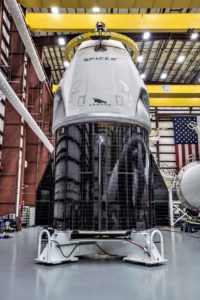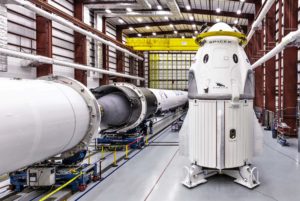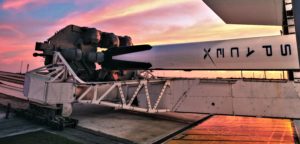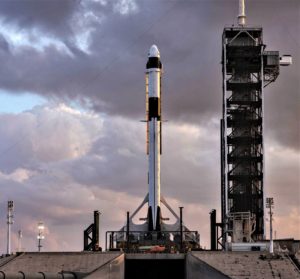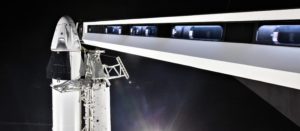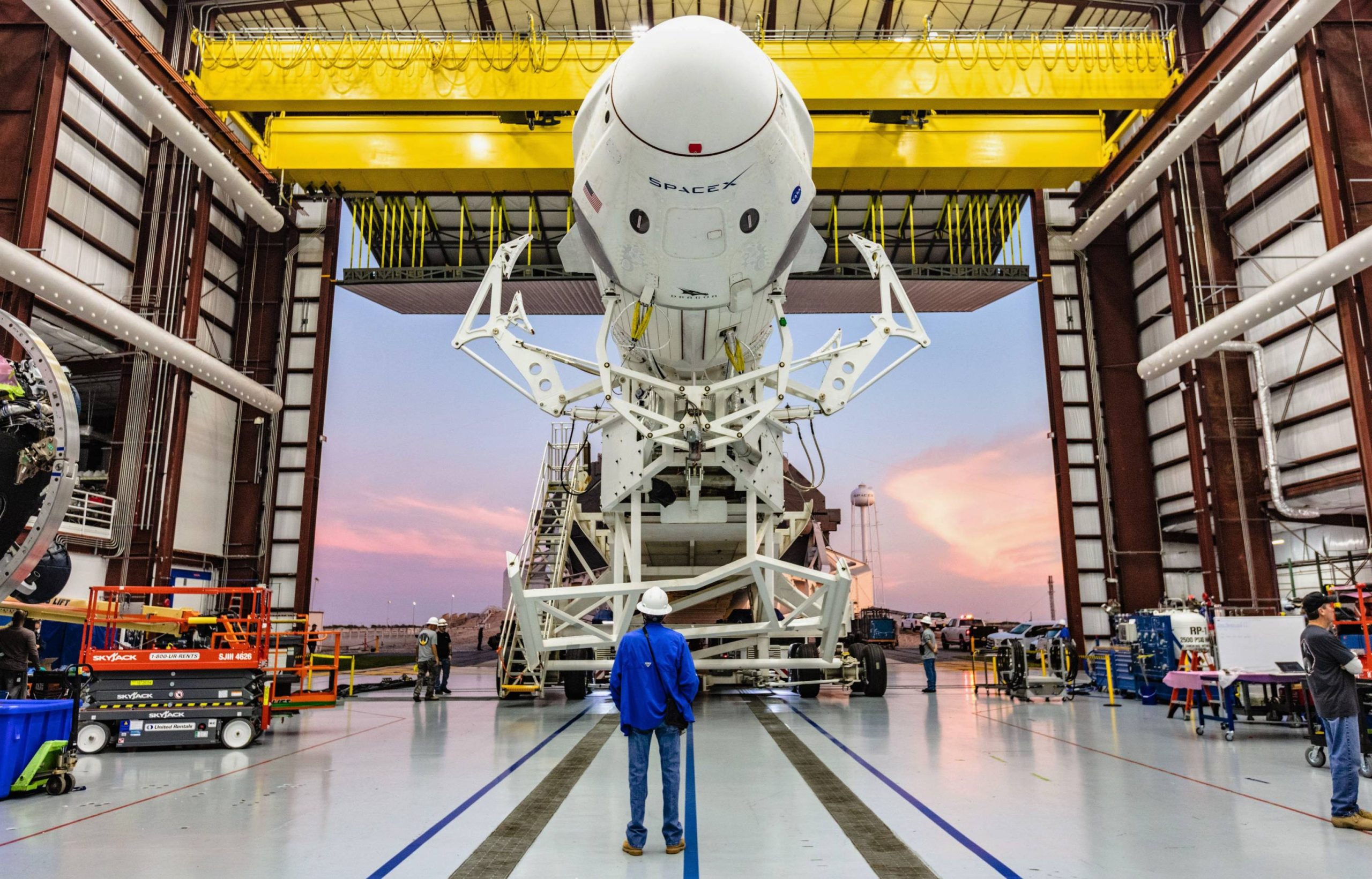
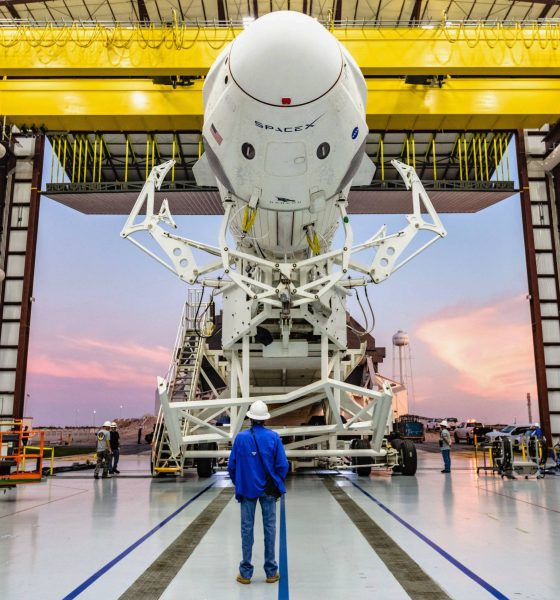
SpaceX
SpaceX to static fire Falcon 9 with a spacecraft on board for the first time in two years
SpaceX has rolled Falcon 9 and Crew Dragon out to Pad 39A for the second time ever in preparation for a full wet dress rehearsal (WDR) and static fire – no earlier than Jan. 23 – of booster B1051’s nine Merlin 1D engines, preparing for an orbital launch attempt that slipped from NET Feb. 9 to Feb. 16 earlier this week.
While this milestone is important for myriad other reasons, it happens to be exceptionally unique thanks to one particularly surprising feature: Falcon 9 rolled out for its static fire with Crew Dragon (the rocket’s payload) still attached. This will be the first time in more than 28 months – since Amos-6, the last catastrophic Falcon 9 failure – that SpaceX has performed its routine on-pad static fire with a valuable payload attached to the rocket.
The Falcon 9 and Crew Dragon are now in position at launch pad 39A in readiness for a crucial test firing of its nine first-stage engines as soon as tomorrow: https://t.co/kYCr6Nzd0I pic.twitter.com/9VDXJL7ZLX
— Spaceflight Now (@SpaceflightNow) January 22, 2019
On September 1st, 2016, a SpaceX Falcon 9 experienced the rocket family’s second catastrophic failure ever when supercool liquid oxygen froze around a COPV’s carbon fiber wrappings, expanding just enough to breach the ultra-high-pressure vessel. Falcon 9 and its ~$200M Amos-6 satellite payload were completely destroyed, while Launch Complex 40 (LC-40) suffered tens of millions of dollars of damage that would effectively require it to be completely rebuilt over the course of more than a year.
After Amos-6, SpaceX immediately halted the practice of including customer payloads on Falcon 9 during static fires, used to save 24-48 hours of time between static fire and launch. SpaceX nevertheless retained the option if customers were to explicitly request it, otherwise wisely concluding (likely with more than a little encouragement from insurance companies) that expediting schedules by a few dozen hours was not worth the entirely unnecessary risk to satellite payloads that often cost hundreds of millions of dollars and take years to build.
https://twitter.com/spiel2001/status/1087828282937102338
Given that SpaceX has stuck to that practice for all 38 Falcon 9 launches it has performed between Amos-6 and the present day, it seems all but guaranteed that the first orbit-ready Crew Dragon’s presence on Falcon 9 during its static fire has been done only at the specific request of the launch customer – in this case, NASA. It’s probably not hyperbolic to argue that Demo-1’s (DM-1) Crew Dragon is the most valuable, important, expensive, and irreplaceable spacecraft SpaceX has ever attempted to launch, having likely spent millions of work hours building, changing, refining, and testing it to meet NASA’s exacting and sometimes absurd requirements.
If Falcon 9 B1051 were to fail with Crew Dragon atop it during its Pad 39A static fire, it might be possible for the DM-2’s Crew Dragon to be completed and modified for an uncrewed test flight with just six months of delay, assuming Falcon 9’s mode of failure could be investigated and repaired to NASA’s satisfaction. However, the destruction of the DM-1 capsule and trunk could almost indefinitely delay SpaceX’s first crewed launch, dependent upon an inflight-abort test that is supposed to use the refurbished DM-1 capsule, while the Crew Dragon currently supposed to launch after DM-2 is unlikely to be ready before August or September 2019.
- The first complete Crew Dragon is likely just days away from rolling out to Pad 39A atop Falcon 9. (SpaceX)
- An impressive view of Crew Dragon (DM-1), Falcon 9 B1051, and its upper stage. (SpaceX)
- DM-1 and Falcon 9 were greeted by an extraordinary – albeit mildly bittersweet – dawn during their first-ever trip out to Pad 39A. (SpaceX)
- Falcon 9 and Crew Dragon vertical at Pad 39A. (SpaceX)
- Crew Dragon and its crew-rated Falcon 9 went vertical at a launch pad (Pad 39A) for the first time ever on January 4th. (SpaceX)
Ultimately, NASA likely requested that Crew Dragon remain atop Falcon 9 for this static fire out of some desire for a full-fidelity test environment and complement of data. There is perhaps a very limited chance that Crew Dragon will be fully fueled with hydrazine (MMH/NTO) and have its launch escape system (LES) active and ready to go in the event of a rocket failure.
Why they deemed the immense potential risk to be worthwhile is far less clear. Whether it is being done out of complacency or a desire for expediency or ultra-realistic test data, the risk is the same. In theory, Falcon 9 has been tested extensively and should operate perfectly, just as expected. So was Amos-6’s Falcon 9.

Elon Musk
Elon Musk’s Biggest Revelations on AI, Robots, and the Future of Work from the Moonshots Podcast

Elon Musk’s appearance on the Moonshots with Peter Diamandis podcast was packed with bold predictions, candid admissions, and surprising tech insights. The nearly three-hour conversation covered everything from artificial intelligence to humanoid robots, geopolitics, and the future of work. Here are the top 10 most intriguing takeaways:
-
Aggressive AGI Timeline Predictions
Musk offered a detailed view on when artificial general intelligence (AGI) could emerge, suggesting it may arrive sooner than many expect, emphasizing both transformative potential and risks.
-
U.S. vs. China in the AI Race
He discussed the strategic competition between the United States and China over AI development, noting that geopolitical dynamics will shape how and who leads in the next decades.
-
Future of Job Markets
Musk touched on how AI and automation could reshape employment, predicting massive boosts in productivity alongside potential disruptions in traditional work structures.
-
Clean Energy Transition
A recurring theme was the role of clean energy in future economies, with Musk reiterating the importance of scaling sustainable power generation and storage.
-
Humanoid Robots Are Coming
On the podcast, Musk elaborated on Tesla’s work on humanoid robots, hinting at timelines and applications that go beyond factories to general-purpose assistance.
-
Tesla Roadster “Last Human-Driven Car”
Outside the core discussion topics, Musk teased features of the upcoming Tesla Roadster — calling it “the best of the last of the human-driven cars” and suggesting safety won’t be its main selling point.
-
The Role of AI in Clean Energy and Robotics
Linking AI to both energy optimization and robotics, Musk explained how smarter systems could accelerate decarbonization and task automation across industries.
-
U.S. Innovation Leadership
Musk argued that maintaining American leadership in key tech sectors like AI, space, and robotics should be a national priority, with thoughtful policy and investment.
-
Job Creation vs. Job Elimination
While acknowledging automation’s disruptive effects, he also outlined scenarios where new industries and opportunities could emerge, particularly in AI, space, and advanced manufacturing.
-
Long-Term Vision for Humanity
Throughout the conversation, Musk revisited his long-term philosophical views — including a belief in humanity’s responsibility to become a multi-planetary and technologically empowered species.
Whether you agree with Musk’s optimism or not, the podcast offers a window into the thinking of one of the most influential figures in tech today, in and why his visions continue to spark debate and inspiration.
Elon Musk
Starlink achieves major milestones in 2025 progress report
Starlink wrapped up 2025 with impressive growth, adding more than 4.6 million new active customers and expanding service to 35 additional countries, territories, and markets.

Starlink wrapped up 2025 with impressive growth, adding more than 4.6 million new active customers and expanding service to 35 additional countries, territories, and markets. The company also completed deployment of its first-generation Direct to Cell constellation, launching over 650 satellites in just 18 months to enable cellular connectivity.
SpaceX highlighted Starlink’s impressive 2025 progress in an extensive report.
Key achievements from Starlink’s 2025 Progress
Starlink connected over 4.6 million new customers with high-speed internet while bringing service to 35 more regions worldwide in 2025. Starlink is now connecting 9.2 million people worldwide. The service achieved this just weeks after hitting its 8 million customer milestone.
Starlink is now available in 155 markets, including areas that are unreachable by traditional ISPs. As per SpaceX, Starlink has also provided over 21 million airline passengers and 20 million cruise passengers with reliable high-speed internet connectivity during their travels.
Starlink Direct to Cell
Starlink’s Direct to Cell constellation, more than 650 satellites strong, has already connected over 12 million people at least once, marking a breakthrough in global mobile coverage.
Starlink Direct to Cell is currently rolled out to 22 countries and 6 continents, with over 6 million monthly customers. Starlink Direct to Cell also has 27 MNO partners to date.
“This year, SpaceX completed deployment of the first generation of the Starlink Direct to Cell constellation, with more than 650 satellites launched to low-Earth orbit in just 18 months. Starlink Direct to Cell has connected more than 12 million people, and counting, at least once, providing life-saving connectivity when people need it most,” SpaceX wrote.
Elon Musk
Starlink passes 9 million active customers just weeks after hitting 8 million
The milestone highlights the accelerating growth of Starlink, which has now been adding over 20,000 new users per day.

SpaceX’s Starlink satellite internet service has continued its rapid global expansion, surpassing 9 million active customers just weeks after crossing the 8 million mark.
The milestone highlights the accelerating growth of Starlink, which has now been adding over 20,000 new users per day.
9 million customers
In a post on X, SpaceX stated that Starlink now serves over 9 million active users across 155 countries, territories, and markets. The company reached 8 million customers in early November, meaning it added roughly 1 million subscribers in under seven weeks, or about 21,275 new users on average per day.
“Starlink is connecting more than 9M active customers with high-speed internet across 155 countries, territories, and many other markets,” Starlink wrote in a post on its official X account. SpaceX President Gwynne Shotwell also celebrated the milestone on X. “A huge thank you to all of our customers and congrats to the Starlink team for such an incredible product,” she wrote.
That growth rate reflects both rising demand for broadband in underserved regions and Starlink’s expanding satellite constellation, which now includes more than 9,000 low-Earth-orbit satellites designed to deliver high-speed, low-latency internet worldwide.
Starlink’s momentum
Starlink’s momentum has been building up. SpaceX reported 4.6 million Starlink customers in December 2024, followed by 7 million by August 2025, and 8 million customers in November. Independent data also suggests Starlink usage is rising sharply, with Cloudflare reporting that global web traffic from Starlink users more than doubled in 2025, as noted in an Insider report.
Starlink’s momentum is increasingly tied to SpaceX’s broader financial outlook. Elon Musk has said the satellite network is “by far” the company’s largest revenue driver, and reports suggest SpaceX may be positioning itself for an initial public offering as soon as next year, with valuations estimated as high as $1.5 trillion. Musk has also suggested in the past that Starlink could have its own IPO in the future.
